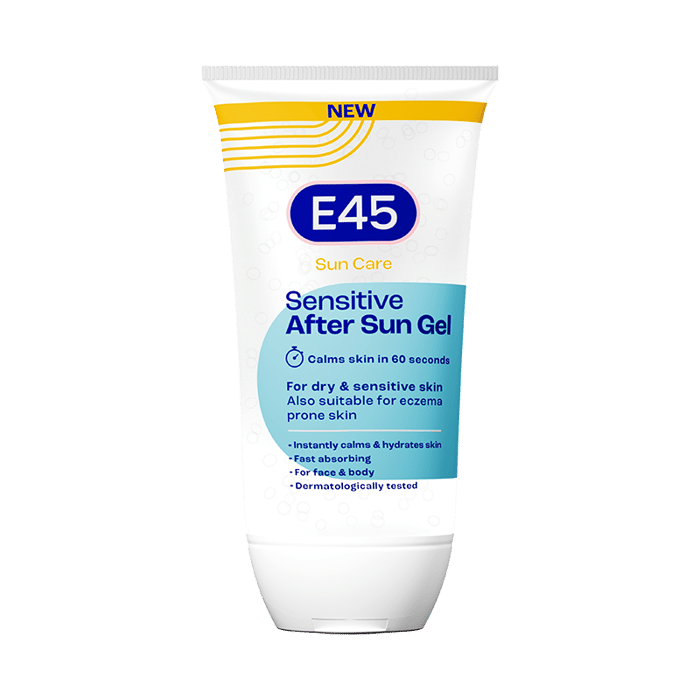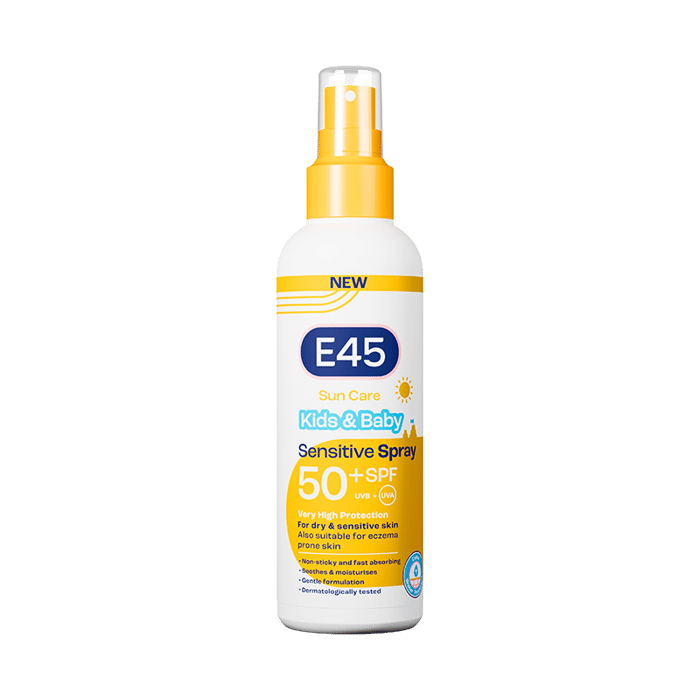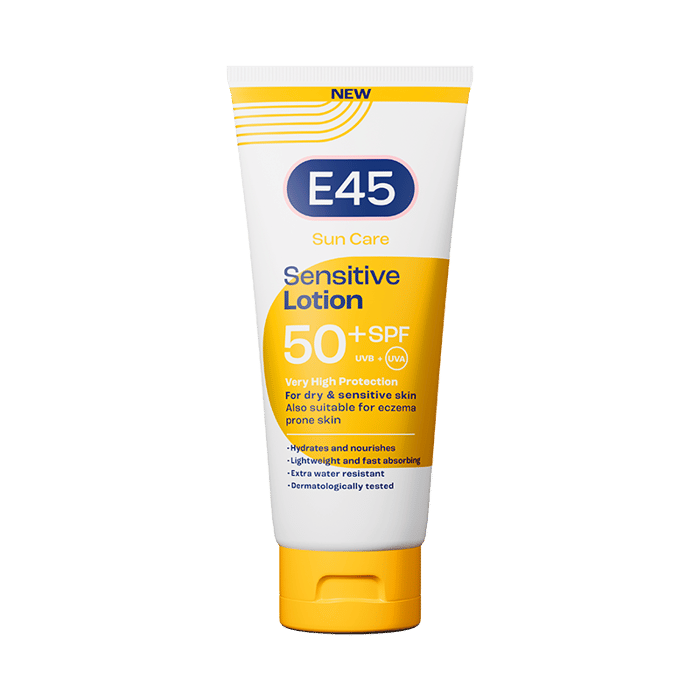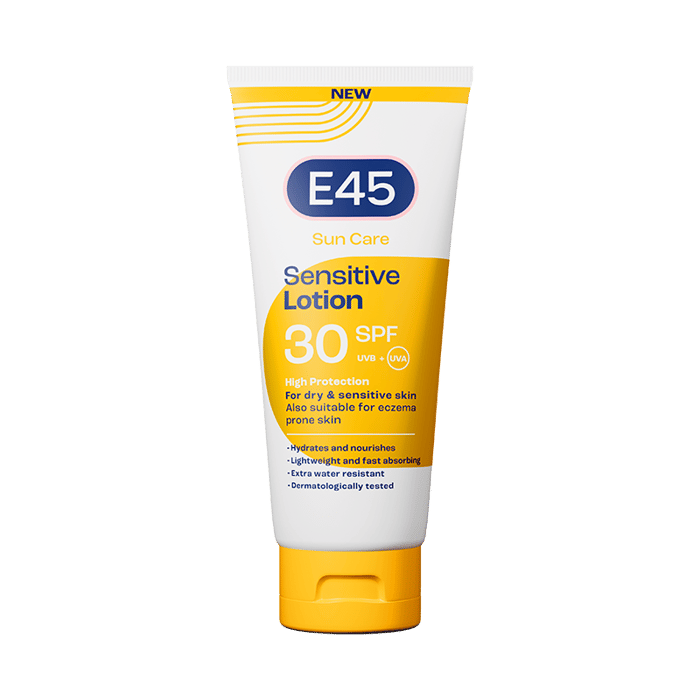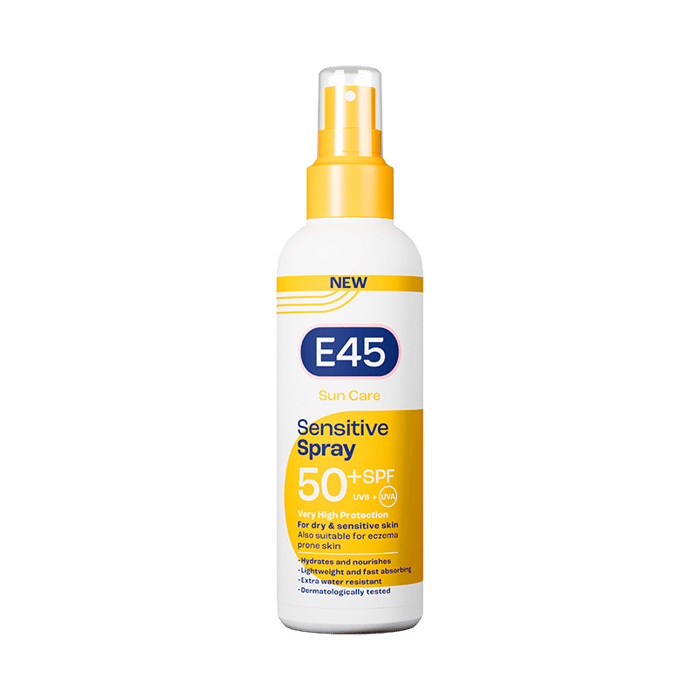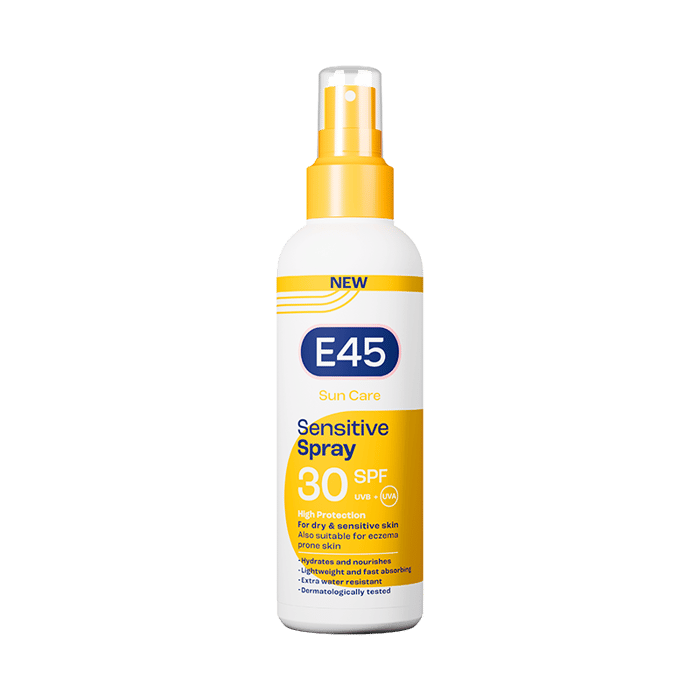Guide to SPF and Sun Protection
Every year, millions of people around the world are treated for skin cancer, and around 80% of these cases are linked to excessive exposure to the sun’s ultraviolet (UV) radiation (source).
Understanding and properly using Sun Protection Factor (SPF) can play a crucial role in reducing this risk. This guide aims to demystify SPF – what it is, how it works, and how to choose and use it effectively for optimal sun protection.
Table of Contents
- What is SPF?
- Understanding SPF and UVA Protection Systems
- Why High UVA Protection Matters
- Choosing Effective Broad-Spectrum Protection
- How SPF Protects Your Skin
- When to Use SPF
- Choosing the Right SPF for Your Skin Type
- Dermatologist-Recommended SPF for Everyday Use
- How to Apply Sunscreen – and How Often
- FAQ: SPF and Sun Protection
What is SPF?
SPF stands for Sun Protection Factor, a measure of how effectively a sunscreen protects the skin from the sun’s ultraviolet B (UVB) rays, which are primarily responsible for sunburn and play a key role in the development of skin cancer.
The SPF rating system was developed to quantify this protection. In practical terms, the SPF value indicates how much longer you can stay in the sun without burning compared to unprotected skin. For example, an SPF 30 sunscreen theoretically allows you to remain in the sun 30 times longer before burning.
However, SPF only measures protection against UVB rays, not ultraviolet A (UVA) rays, which penetrate deeper into the skin and contribute to premature ageing and long-term skin damage.
For comprehensive protection, it’s important to choose a broad-spectrum sunscreen, which shields against both UVA and UVB radiation. This ensures more complete defense against the harmful effects of sun exposure, tailored to your skin type, environment, and duration outdoors.
Understanding SPF and UVA Protection Systems
Sunscreens are formulated to protect the skin from ultraviolet (UV) radiation, and their labelling reflects how effectively they guard against both UVB and UVA rays.
While many consumers focus on the SPF number alone, comprehensive sun protection requires understanding the full range of labelling systems used to indicate UV protection.
Understanding UVA and UVB Labelling
While UVB protection is indicated by the SPF value, UVA protection is communicated through distinct labelling systems depending on the region or regulatory framework.
UVB Protection
- SPF 15: Provides moderate protection, blocking about 93% of UVB rays.
- SPF 30: A common and recommended level for daily use, blocking about 97% of UVB rays.
- SPF 50: Offers high protection, blocking approximately 98% of UVB rays.
- SPF 70 and above: These very high SPFs offer only a slight increase in protection compared to SPF 50..
UVA Protection
Indicated through one or more of the following:
1. UVA in a circle (EU standard)
- Confirms the product meets EU requirements ensuring a minimum level of UVA protection relative to UVB protection.
2. UVA Star Rating System (UK)
- Measures the ratio of UVA to UVB protection.
- Ratings range from 0 to 5 stars:
- 1–2 stars: Low to moderate UVA protection
- 3–4 stars: Good to very good UVA protection
- 5 stars: Excellent, high-level UVA protection
- Dermatologists recommend a minimum of 4 stars for effective daily UVA defence.
3. PA Rating System (Asian markets and increasingly global)
- Expressed as PA+, PA++, PA+++, or PA++++, based on the Persistent Pigment Darkening (PPD) test.
- PA+ = Low UVA protection
- PA++ = Moderate
- PA+++ = High
- PA++++ = Very high
- This is the system behind labels such as “+++”, which consumers sometimes mistake as part of the SPF rating.mmend a minimum of 4 stars for effective daily UVA defence.
Why High UVA Protection Matters
UVA rays penetrate more deeply into the skin which can contribute to:
- Premature skin ageing
- Pigmentation disorders
- DNA damage
- Long-term photoaging and increased skin cancer risk
Because UVA rays can penetrate clouds and glass, adequate daily UVA protection is essential, even indoors or in overcast weather.
Choosing Effective Broad-Spectrum Protection
To ensure robust defence against the full spectrum of UV radiation:
Select sunscreens with:
- Sufficient SPF (typically SPF 30 or higher for daily use).
- Strong UVA protection, indicated by:
- UVA circle symbol,
- 4–5 stars in the UK system, or
- PA+++ or PA++++ in the PA rating system.
- Apply sunscreen generously and reapply regularly to maintain effective protection
By choosing products that meet these standards and using them consistently it’s possible to significantly reduce risk of sunburn, premature ageing, and UV-induced skin damage, supporting healthier, more resilient skin over time.
How SPF Protects Your Skin
Understanding how SPF shields your skin is key to effective sun protection. Sunscreens work through a combination of mechanisms that both block and absorb UV radiation, forming a protective barrier on the skin’s surface.
Formation of a Protective Layer
When sunscreen is applied, it creates a thin, uniform layer that acts as a barrier between your skin and the sun’s harmful rays. The effectiveness of this protection depends on the formulation of the sunscreen, as well as the amount and evenness of application. For detailed guidance, refer to our Ultimate Guide to Sunscreen.
Dual Action: Blocking and Absorbing UV Rays
By combining these mechanisms, modern sunscreens offer broad-spectrum protection that minimises sunburn, reduces the risk of long-term skin damage, and supports overall skin health. Consistent and generous application is essential to maintain effective protection throughout sun exposure.
Read more: UV Rays and Sun Exposure
When to Use Sun Protection
Sun protection should be applied whenever your skin is exposed to sunlight, as UV radiation can cause damage even on days that do not feel particularly sunny. Consistent use of sunscreen is essential for maintaining healthy skin and preventing both short- and long-term effects of UV exposure. Below are key situations when sunscreen use is especially important:
1. During Outdoor Activities
Apply sunscreen whenever you spend time outdoors, whether you’re walking, exercising, gardening, or participating in sports. Even brief exposure can accumulate over time, and UV rays can still penetrate through light cloud cover.
2. During Peak Sun Hours
UV radiation is strongest between 10 a.m. and 4 p.m. During these hours, sun protection is crucial, as skin damage can occur more quickly. If possible, seek shade and reapply sunscreen regularly.
3. At High Altitudes and Near Reflective Surfaces
UV intensity increases with altitude, and surfaces such as water, sand, and snow can reflect UV rays, amplifying exposure. In these environments, generous and frequent application of a broad-spectrum sunscreen is essential.
4. Even in Winter or on Cloudy Days
Up to 80% of UV rays can penetrate clouds, and snow can reflect sunlight, effectively doubling UV exposure. For this reason, SPF should be part of your daily skincare routine year-round, regardless of weather conditions.
Choosing the Right SPF for Your Skin Type
Selecting the appropriate SPF for your skin type is essential to ensure effective sun protection and maintain long-term skin health. Each skin type reacts differently to UV radiation, and tailoring your sunscreen choice helps provide the right level of defence.
Fair Skin (Burns Easily)
Individuals with fair skin that tends to burn quickly should use a high SPF, ideally SPF 50 or above. This is particularly important for those with freckles, red or blonde hair, or light-coloured eyes, as these features are often associated with heightened sensitivity to UV radiation.
Medium Skin (Sometimes Burns)
For medium skin tones that may tan but can still burn, an SPF between 30 and 50 offers effective protection while allowing for a gradual, healthy-looking tan.
Darker Skin (Rarely Burns)
Darker skin contains more melanin, which provides some natural protection; however, UV damage and hyperpigmentation can still occur. Using SPF 15 to 30 is recommended to prevent long-term sun damage and reduce the risk of skin cancer.
Sensitive Skin
Those with sensitive or reactive skin should choose sunscreens labelled “for sensitive skin.” These formulas are typically fragrance-free, hypoallergenic, and use physical (mineral) filters such as zinc oxide or titanium dioxide to minimise irritation.
Oily or Acne-Prone Skin
For oily or acne-prone skin, select oil-free, non-comedogenic sunscreens with SPF 30 or higher. These formulations help prevent clogged pores and breakouts while providing effective UV protection.
Children’s Skin
Children’s skin is more delicate and vulnerable to UV damage. Use a broad-spectrum, water-resistant sunscreen with SPF 30 or higher that is specifically formulated for children’s sensitive skin.
Additional Sun Protection Guidelines
- Choose Broad-Spectrum Sunscreen: Always select sunscreens that protect against both UVA and UVB rays.
- Opt for Water Resistance: When swimming or sweating, use a water-resistant sunscreen. Remember that no product is completely waterproof—reapply every two hours and after swimming or heavy perspiration.
- Adopt Comprehensive Sun Safety Practices: Sunscreen should complement other protective measures such as wearing wide-brimmed hats, protective clothing, seeking shade during peak sunlight hours (10 a.m. to 4 p.m.), and avoiding prolonged exposure.
Read more: Guide to Sun Safety
Dermatologist-Recommended SPF for Everyday Use
Dermatologists consistently recommend using a sunscreen with a minimum SPF of 30 as part of daily skincare. This level offers effective protection against UVB radiation, which is responsible for sunburn and plays a major role in the development of skin cancer.
How to Apply Sunscreen and How Often
Applying sunscreen correctly and reapplying it at the right intervals is essential for effective protection against UV damage. Even high-SPF products can underperform if applied too sparingly or infrequently. The following dermatologist-approved guidelines outline how to apply sunscreen properly for optimal results.
1. Amount to Use
Most adults need approximately six to eight teaspoons (30–40 ml) of sunscreen to cover the entire body. However, a more practical and widely recommended method is the “two-finger rule” or “finger-length guide.”
Using this method:
- Squeeze sunscreen along the length of two fingers (from base to tip) — roughly equivalent to 1 teaspoon (5 ml).
- Apply two finger-lengths of product to the face and neck.
- Use one finger-length for each arm, and two finger-lengths for each leg.
- Apply two finger-lengths each to the front and back of the torso.
This approach offers an easy visual reference to ensure adequate coverage without the need for precise measuring.
2. Apply Before Sun Exposure
Apply sunscreen around 30 minutes before going outdoors. This allows time for the product, especially chemical formulations, to bind effectively to the skin and form a uniform protective layer.
3. Ensure Complete Coverage
Apply sunscreen to all exposed areas, including frequently missed spots such as the ears, back of the neck, tops of the feet, and scalp (if hair is thin or absent).
4. Reapplication
Reapply sunscreen every two hours, and more often if you are swimming, sweating, or have towel-dried your skin. Even water-resistant sunscreens lose effectiveness after prolonged moisture or friction exposure.
5. Use in All Weather Conditions
UV radiation penetrates clouds and reflects off surfaces such as snow, water, and sand. For this reason, sunscreen should be applied daily, throughout the year, even on cloudy or winter days.
6. Combine with Other Sun Protection Measures
No sunscreen offers complete protection. For effective defence against UV radiation, sunscreen should be used alongside additional protective strategies, including:
- Wearing protective clothing such as long sleeves and wide-brimmed hats
- Using UV-protective sunglasses
- Seeking shade during peak sunlight hours (10 a.m. to 4 p.m.)
- Avoiding prolonged exposure when UV intensity is highest
Understanding and using sun protection correctly is essential for maintaining healthy skin. Selecting an appropriate SPF, applying it generously, and reapplying regularly all contribute to preventing sunburn, premature ageing, and long-term UV damage.
Even on cloudy or cooler days, UV rays can penetrate the atmosphere and harm the skin, making daily sunscreen application important throughout the year. Incorporating sunscreen into a broader sun safety routine helps protect the skin’s health, appearance, and resilience while allowing you to enjoy time outdoors more safely.
FAQ: SPF and Sun Protection
What does SPF mean?
SPF stands for Sun Protection Factor. It indicates how effectively a sunscreen protects the skin from UVB radiation, the primary cause of sunburn and a contributing factor to skin cancer.
Is SPF 30 or 50 better?
SPF 50 provides slightly higher protection than SPF 30, blocking approximately 98% of UVB rays compared to 97% for SPF 30. While the difference is modest, both levels offer effective protection when applied correctly and generously.
What is SPF +++?
The “+++” notation does not form part of an SPF rating. Instead, it is used in the PA rating system — written as PA+, PA++, PA+++, or PA++++ — to indicate the level of UVA protection. More “+” signs represent stronger defence against deep skin damage, photoaging, and long-term UVA exposure.
What is SPF good for?
SPF protects the skin from UVB radiation, preventing sunburn and reducing the risk of long-term skin damage and skin cancer. Regular use of sunscreen with an appropriate SPF supports overall skin health while allowing safe sun exposure.



